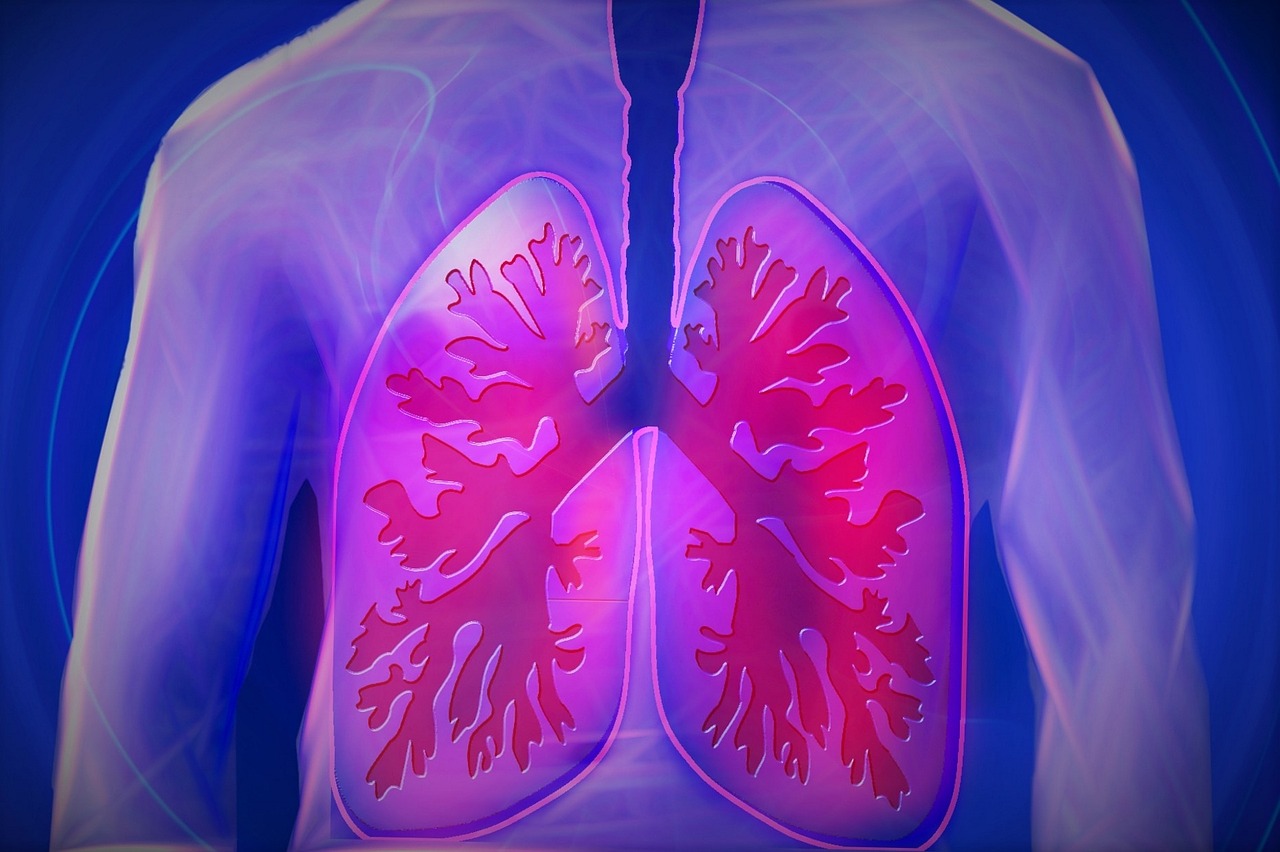
The lungs are an incredibly important component of the body’s health, and they are constantly at work. Seventy percent of waste is filtered out of your body through breathing, and every minute your lungs are working to keep your body energized, so investing in their health and ensuring they are performing optimally is vitally important. Unfortunately, there are toxins and disease that threaten our lungs, but understanding these risks can keep your respiratory system functioning at its greatest potential. In honor of Lung Cancer Awareness Month, below are a few issues that our lungs face, and tips on how to keep them operating at ease.
Chronic Obstructive Pulmonary Disease (COPD)
COPD is the name for a group of lung diseases that include asthma, emphysema, and chronic bronchitis. COPD is a progressive disease, meaning that the disease may grow in the body and worsen over time. These chronic diseases occur when the bronchial airways, tubes and alveoli become inflamed or damaged within the lungs.
Smoking is the most obvious cause of COPD, with 75 percent of patients being current or past smokers. Cigarette and cigar smoke, as well as second hand smoke, can damage the lungs when inhaled, and those with a family history of the disease are also more likely to contract it. COPD can also be developed in other cases from the inflammation of asthma over time.
This disease doesn’t have a cure yet, but instilling specific lifestyle changes can help slow its progression and make life easier for those affected. The biggest change that anyone with COPD, or at risk for it, can do is quit smoking, as it is the number one cause of this debilitating group of lung diseases. While physical activity may be difficult with respiratory illnesses, staying active in small ways will keep muscles strong and keep the wellness of the rest of your body in check.
Mesothelioma
Mesothelioma is a deadly cancer affecting those who have been previously exposed to asbestos — a natural fibrous mineral. Asbestos was at one time very widely used in products and building materials for its strength and fire resistant properties. As a result, many people were exposed during their jobs and even in their homes. If asbestos is ingested into the body, it can become imbedded in the organs and cause irritation. This irritation has the potential to develop into cancer over time in the lungs, heart, or the peritoneum (abdomen).
Mesothelioma cancer is an aggressive disease with an unfortunate average life expectancy of just 1-2 years. The only known cause of mesothelioma is inhaling or ingesting asbestos. Being aware of asbestos while on the job or in your home is an important way to decrease your chances of being exposed to the toxin. Since asbestos was used so widely for many years, there is a chance that workers and those approaching DIY renovations could be unknowingly exposed. Staying in tune and up date with consumer safety information and where asbestos is generally found could save yourself and others from being put at risk.
Lung Cancer
Lung cancer is still the most common cancer worldwide, and can be traced back to several different causes. As its name implies, this cancer begins in the lungs, but can spread to other organs as time goes on. The two main forms of lung cancer are small cell lung cancer and non-small cell lung cancer, with small-cell being the more aggressive of the two. Lung cancer prognosis can vary, but in any case it is best to catch the cancer in its earliest stages. The overall 5-year survival rate of lung cancer is 17.7 percent, but that increases greatly with an early diagnosis. Smoking tobacco in any form is the most common cause of lung cancer, but lesser known cases include exposure to radon, asbestos, and inhaling second-hand smoke. Monitoring your health for symptoms of lung cancer is important at any age, so talk with your doctor if you experience chest pain, shortness of breath, a persistent cough, or weight loss.
Pneumonia
When the air sacs within the lungs fill with fluid an infection called pneumonia can develop. This leads to a persistent cough, chills, extreme fatigue, and can even lead to death if not properly treated. Most cases of pneumonia are mild, but the very young, elderly, or those with immune disorders should be especially cautious. Pneumonia isn’t necessarily caused by any specific lifestyle choices, and is commonly picked up from germs in your everyday environment. Community-acquired pneumonia can most commonly be caused by bacteria, but is also caused by bacteria-like organisms, viruses, and fungi. Alternatively, these germs can be picked up in a hospital environment or doctor’s office. It is important to keep hands clean, keep a healthy immune system, and get vaccinated annually to prevent strains of the flu and pneumonia.
Keeping Air Healthy
Since families spend a majority of their time indoors in colder climates, it’s important to keep a pulse on the quality of air in your home. Your indoor air can have an immense effect on your health if left unchecked, and can lead to lung disease and even cancer. With a few easy changes, you can ensure that you and your family are breathing clean air, and manage their long-term health.
Get your home checked
Having your home checked for invisible toxins is an important step in maintaining the health of your space. Toxins that cause lung cancer and mesothelioma cancer, such as radon and asbestos, can exist in your home without our knowledge and be inhaled at any point. Radon is an invisible and odorless gas and has the potential to seep through cracks in a foundation, which is why it is a leading cause of lung cancer — second only to smoking.
To get your home tested for radon you can hire an inspector to conduct a radon test, or install radon detectors within your home. If you home or apartment is exposed to radon, you can have a professional assess where the gas is getting in, have it sealed or install a radon sump system to filter that gas out of your home. This problem can be especially prevalent in low ventilated spaces like basements, bathrooms or smaller rooms. You can also hire an inspector or asbestos abatement expert to test your home for asbestos
Use natural cleaners and deodorizers
Pollutants can come in many different forms in your home, but ones you can definitely control are the cleaners, sprays and disinfectants that you decide to use in your home. Those who work with household cleaners are often in close proximity to and may be using these supplies in poorly ventilated areas. If inhaled over time, these chemicals can be damaging and can worsen conditions like asthma and COPD.
To ensure that you are using the safest cleaning agents in your home, be vigilant when checking labels and purchasing cleaning supplies. Take note of this list of potentially harmful toxins when shopping and opt for DIY cleaning solutions when you can. For example, mixing distilled water and vinegar in a mop bucket or spray bottle is both safer and more cost effective. Introducing breathable, eco-friendly plants into your home can also help naturally filter out toxins while promoting a healthier space.


